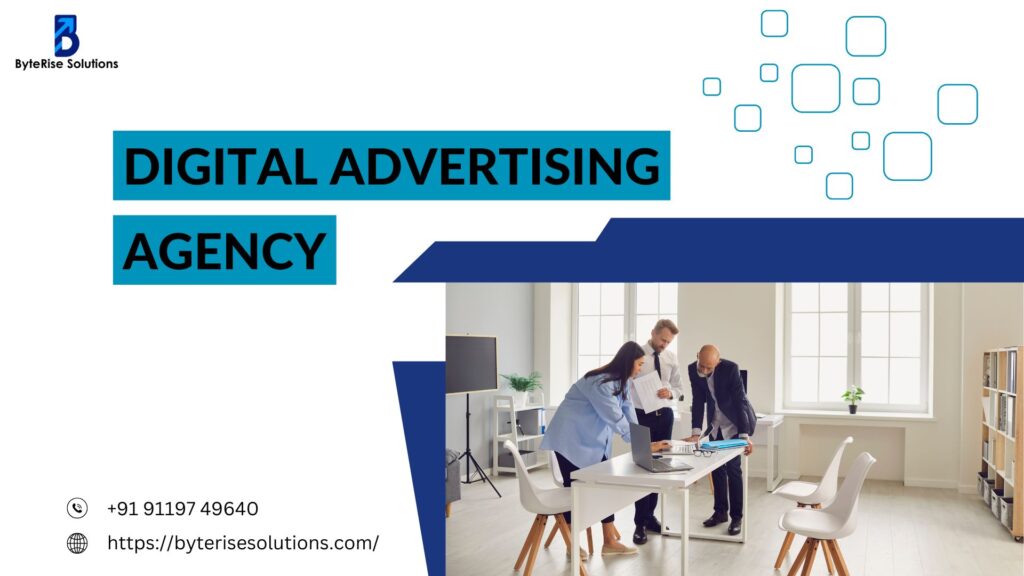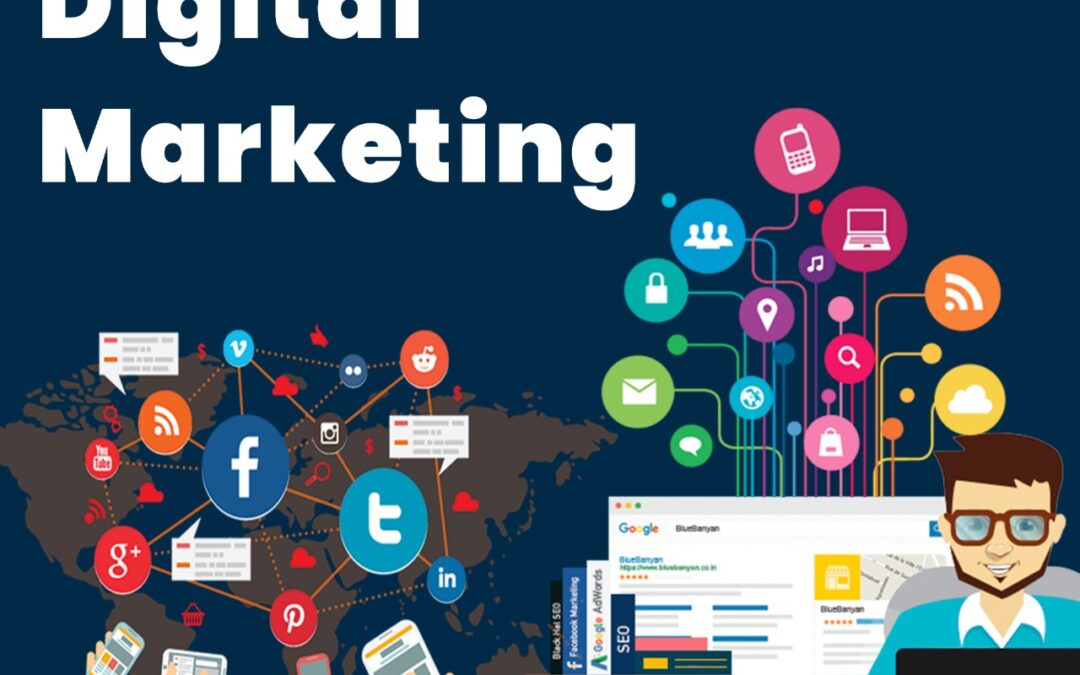Benefits Of Digital Advertising

Benefits of Digital advertising has become an essential component of modern marketing strategies for businesses of all sizes. With the rise of the internet, social media platforms, and mobile devices, digital advertising allows companies to reach their target audience in ways that traditional forms of marketing cannot. Whether it’s through search engines, social media, video platforms, or email marketing, digital advertising provides numerous advantages that make it a valuable tool for brands aiming to grow their customer base, enhance brand visibility, and boost sales. Here are eight major benefits of digital advertising:
Key benefit of Digital Advertising –1 Wide Reach and Global Accessibility

One of the most significant advantages of digital advertising is its ability to reach a vast audience across the globe. Perks of Digital Marketing methods, such as print or television, are often limited to specific geographic regions or demographic groups. Digital advertising, on the other hand, allows businesses to break through geographical barriers and connect with potential customers worldwide.
Platforms like Google Ads, Facebook, Instagram, and YouTube have billions of active users across the globe. This gives businesses an unparalleled opportunity to target international markets and expand their brand’s reach far beyond their local area. Whether a business is promoting a product or service on a global scale or focusing on local consumers, digital advertising allows for greater flexibility in targeting audiences based on location, interests, behaviors, and other key factors.
The accessibility of digital advertising means that even small businesses with a limited marketing budget can compete in a global marketplace, something that was much harder to achieve with traditional advertising methods.
Cost-Effectiveness is the 2nd benefit of digital advertising

Digital advertising is generally more affordable than traditional forms of advertising, such as print ads, TV commercials, or billboards. While traditional advertising often requires significant upfront costs, digital platforms offer flexible pricing models that can cater to businesses of all sizes.
One of the most common pricing models for digital ads is the pay-per-click (PPC) model, which means businesses only pay when a user clicks on their ad. This ensures that the budget is spent efficiently and allows businesses to track the effectiveness of their campaigns in real-time. Additionally, cost-per-impression (CPM) and cost-per-acquisition (CPA) models can be highly cost-effective depending on the campaign’s goals.
For small businesses, this cost-effectiveness is particularly valuable. Digital ads can be run with a minimal budget and still achieve good results, making it an accessible option for startups and entrepreneurs. Compared to traditional marketing methods, which may involve hefty investments in print, TV, or radio ads, digital advertising enables businesses to scale their campaigns according to their financial capacity, maximizing their return on investment (ROI).
3. Precise Targeting and Segmentation
One of the key benefits of internet advertising is its ability to provide precise targeting. Traditional advertising methods rely on broad demographics such as age, gender, and location, but digital advertising allows for far more granular targeting.
Platforms like Google Ads, Facebook, and LinkedIn provide a variety of targeting options that can help businesses reach the most relevant audience. These targeting options include:
- Geographic targeting: Targeting users based on their location, whether at the city, state, country, or even zip code level.
- Demographic targeting: Reaching specific age groups, genders, or income brackets.
- Behavioral targeting: Reaching users based on their online activities, such as browsing behavior, past purchases, or search history.
- Interest-based targeting: Targeting individuals who have shown an interest in specific topics or industries, such as fitness, technology, or fashion.
- Remarketing/Retargeting: This allows advertisers to target individuals who have previously interacted with their website or app, increasing the likelihood of conversion.
This level of targeting ensures that your advertising budget is spent efficiently by showing ads to individuals most likely to be interested in your products or services. By refining your audience, digital advertising ensures you don’t waste resources on irrelevant clicks, leading to higher conversion rates.
4. Measurable Results and Analytics

Another significant benefits of digital advertising is the ability to track and measure results in real-time. Unlike traditional advertising, where it can be challenging to gauge the effectiveness of a campaign, digital ads provide comprehensive data that allows businesses to assess their performance accurately.
Digital advertising platforms provide various analytics and metrics to measure the success of a campaign, such as:
- Click-through rate (CTR): The percentage of people who clicked on the ad after seeing it.
- Conversion rate Optimization: The percentage of people who completed a desired action (e.g., making a purchase, signing up for a newsletter).
- Return on investment (ROI): The revenue generated relative to the amount spent on the ad campaign.
- Cost-per-click (CPC): The average cost a business pays for each click on their ad.
- Impressions: The number of times an ad is displayed to a user.
With this data, businesses can continuously optimize their campaigns by tweaking ad copy, adjusting targeting, or reallocating budget to the best-performing ads. This level of insight ensures that businesses can make informed decisions, improve ad performance, and maximize ROI.
5. Real-Time Adjustments and Flexibility
Digital advertising allows businesses to make real-time adjustments to their campaigns, which is not possible with traditional methods. If an ad is underperforming or a new opportunity arises, businesses can quickly change their approach to improve results.
For example, if an ad is not performing well in one geographic region, you can pause that ad and reallocate the budget to areas where it’s more effective. Similarly, if an ad isn’t resonating with your audience, you can easily modify the ad copy, targeting, or visuals to test different approaches and improve performance.
Benefits of digital advertising highly adaptable to changing market conditions, trends, or customer preferences. Whether you want to ramp up your spending on a high-performing ad or adjust your messaging during a sale or seasonal event, digital advertising offers the agility needed to stay competitive.
6. Increased Engagement and Interaction

Digital advertising provides more opportunities for direct engagement with consumers than traditional advertising. Social media platforms, for example, allow users to like, comment, share, and interact with ads. This interaction fosters a two-way communication channel between businesses and consumers, allowing for immediate feedback and engagement.
Engagement also increases the likelihood of word-of-mouth marketing, as consumers are more likely to share content they find relevant or exciting with their friends or followers. This form of social proof can help build brand awareness and increase credibility among potential customers.
Furthermore, benefits of digital advertising allows businesses to respond to customer comments or questions in real-time, which can improve customer satisfaction and trust in the brand. By engaging with users on platforms such as Facebook, Instagram, and Twitter, businesses can strengthen their relationships with current and potential customers.
7. Enhanced Brand Visibility and Awareness
With digital advertising, businesses can increase their brand visibility and awareness significantly. Whether through search ads, social media ads, or display ads, businesses can place their brand in front of potential customers at the right time.
For example, search ads on Google can position your branding online at the top of the search results when users are actively searching for products or services related to your business. Social media ads on platforms like Facebook or Instagram can showcase your brand to users who may not have heard of you before but are likely to be interested in what you offer.
Additionally, display ads across websites and apps can create frequent touchpoints for your brand, ensuring that users encounter your business repeatedly, which is crucial for brand recognition. By consistently appearing in front of users, benefits of digital advertising helps build familiarity, making it more likely that consumers will choose your brand when they’re ready to make a purchase.
8. Improved Customer Insights

Digital advertising offers businesses valuable insights into their customers’ behaviors and preferences. By analyzing metrics such as click patterns, engagement rates, and conversion actions, businesses can better understand their target audience and tailor their marketing efforts accordingly.
For example, you can learn which types of ads are generating the most engagement, which demographics are most responsive, and which platforms are delivering the highest ROI. This information can then be used to refine your targeting, create more relevant ad content, and improve your overall marketing strategy.
In addition, customer insights from digital advertising can inform product development, customer service strategies, and other areas of the business. By understanding the needs and behaviors of your audience, you can create more personalized experiences, improving customer satisfaction and fostering loyalty.
Conclusion
Benefits of Digital advertising offers businesses numerous benefits, from its ability to reach a global audience and provide cost-effective solutions to its precise targeting and real-time performance tracking. With increased engagement, better customer insights, and the ability to make real-time adjustments, digital advertising empowers businesses to connect with their target audience in meaningful ways. As the digital landscape continues to evolve, the power of digital advertising to drive growth and success will only increase, making it an indispensable tool for marketers in the modern era.

